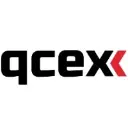Why Banks Are on High Alert About Stablecoins — WSJ
Dow Jones Newswires
2025-07-18 21:52:00


By Dylan Tokar and Gina Heeb
Stablecoins are poised to become a part of the mainstream financial system, and banks are on high alert about how the cryptocurrency could threaten their business.
The House voted 308-122 Thursday to pass a bill that spells out some ground rules for stablecoins, which function as digital dollars in the wider crypto world. The Genius Act is now headed to President Trump, who has indicated he would sign it.
A major issue for banks is whether stablecoin issuers will lure away customer deposits. A Treasury Department report in April estimated that stablecoins could lead to as much as $6.6 trillion in deposit outflows, depending in part on whether issuers could offer yields similar to bank accounts.
Unlike bitcoin and other cryptocurrencies with volatile values, stablecoins as envisioned in the Genius Act are supposed to maintain a 1:1 exchange ratio with the U.S. dollar or other fiat currencies so they can be easily used for payments.
For now, stablecoins are mainly used to trade in and out of other cryptocurrencies. But a regulatory framework could encourage broader use. Many view stablecoins as a way to more quickly and cheaply make a range of payments — especially cross-border ones — which in the current system can take days to settle and are subject to interchange and other fees.
Customer deposits
Stablecoin issuers such Circle and Tether earn revenue by investing the money people pay for tokens in cash-like assets such as Treasurys that pay yields.
Coinbase CEO Brian Armstrong has argued that token-holders should get some of the interest issuers receive on those assets.
The Genius Act prohibits stablecoin issuers from paying interest or yield to holders. Some lawyers and lobbyists say that may not stop issuers and their partners from finding ways to induce customers to hold stablecoins.
Take crypto exchange Coinbase, which offers a 4.10% reward rate for customers that hold the popular stablecoin USD Coin, also known as USDC. The coin's issuer, Circle, shares interest revenue from the assets that back USDC with Coinbase.
The result is something that critics say looks a lot like a yield-bearing stablecoin. Coinbase says the reward program is separate from its revenue-sharing deal with Circle.
The Independent Community Bankers of America this week sent a letter to House leaders asking them to ensure that the prohibition on offering interest couldn't be evaded.
Stability concerns
Once the bill is signed into law, bank regulators will still need to establish regulations related to stablecoins, including around the capital issuers should hold.
Another concern is that stablecoins could lead to higher amounts of uninsured deposits at banks. If a customer takes money out of a Federal Deposit Insurance Corp.-backed account and buys a stablecoin, the issuer of that coin might end up putting the customer's money back in a bank account — albeit a higher-balance account that is above the $250,000 limit for deposit insurance.
A shift by consumers away from holding money in traditional bank deposits could have broad economic implications as well.
Banks inject customer deposits back into the economy through loans to companies and consumers. If consumers move money away from banks and into stablecoins, it could impact banks' ability to do that lending.
Those concerns would be especially acute if nonbank stablecoin issuers were to get access to the Federal Reserve system, said Karen Petrou, managing partner of consulting firm Federal Financial Analytics, in a recent memo.
The Genius Act doesn't prohibit access to the Fed by nonbank stablecoin issuers, so it will remain up to Fed officials to determine who gets access.
The Fed system gives banks access to extra cash in the event of market stress. The trade-off for banks are costly liquidity requirements, which don't currently apply to stablecoin issuers.
Nonbank stablecoin issuers could sap deposits from banks and simply invest them for their own benefit, rather than use them to help fund loans "that benefit banks, borrowers and the economy as a whole," Petrou said.
Opportunity for big banks
It isn't all downside for banks. Big banks, in particular, hope to cash in on stablecoins, by managing stablecoin reserves and serving as a middleman between issuers and the world of fiat currencies.
Megabanks also recently started to consider whether to jointly launch their own stablecoin through a consortium, to fend off competition as big tech and retail companies eye the space.
Walmart, Amazon and other multinational giants have recently explored whether to issue their own stablecoins in the U.S., The Wall Street Journal previously reported.
Write to Dylan Tokar at dylan.tokar@wsj.com and Gina Heeb at gina.heeb@wsj.com
Tin tức mới nhất
BitouChnews
2025-07-17 15:43:08
BitouChnews
2025-07-10 04:01:32
BitouChnews
2025-07-10 04:00:25











